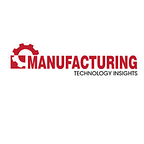Top 10 Motion Control Systems Companies
It is often said that change is that the only constant. because the world rides on the wave of digitalization, now the OEM industry has reached an inflection point. Implementation among early adopters has gradually given thanks to broader penetration as end-users and OEMs developed a clear understanding of how the technology fits into their particular business models. the requirements of these groups, in turn, put the responsibility for implementation on motion control suppliers, a dynamic that’s transforming automation.
Traditionally, machine design followed a serial process of mechanical design followed by electrical design and controls. Once assembled, machines were commissioned, they’re operated using manufacturing execution systems (MES), supervisory control, and data acquisition (SCADA) software. At each level, separate systems had to be interfaced and data transferred, requiring time, effort, custom code, and physical connections.
Today, OEMs place a greater emphasis on motion control. Programming and validation are often time-consuming and sophisticated, particularly when it involves highly coordinated motion control. The goal of motion suppliers has been to develop applications that do the work for the OEMs and integrators, lessening their burden. this is often particularly beneficial for machine builders who lack deep motion control expertise. The trend of simplifying software continues with making machine controllers and PLCs configurable rather than programmable. The approach enables OEMs and integrators to urge their systems up and running much more rapidly than if they needed to develop custom code. once they got to modify a platform for a selected application or customer, they only got to reconfigure instead of re-engineer the appliance from scratch.
Simultaneously, modern components simplify this process with built-in connectivity, memory, and processing capabilities. Edge-computing devices tame the info monster, sending reduced data sets to the cloud where they will be mined with web-based analytics. The approach enables asset owners and repair organizations to form rapid, informed decisions. Besides, the application of simulation enables them to check out a good sort of option while reducing the number of surprises. The simulation begins within the design phase using techniques like finite-element modeling to raised understand performance. an in-depth digital model that has the masses which will be moved and rotated makes it possible to far more effectively size motors and gearboxes to optimize performance and minimize footprint and price. Simulation enables OEMs to check out a number of the functions of their machine design and do a simpler job of delivering application-specific features to the top user.
To help companies navigate through the best-breed motion control systems solution providers Manufacturing Technology Insights has compiled an inventory of leading motion control systems solution providers. A distinguished panel comprised of CIOs, VCs, and industry analysts, alongside Manufacturing Technology Insights’ editorial team has evaluated and shortlisted organizations that have significantly stood call at the motion control arena for the year 2019. the businesses featured during this issue through their business knowledge and industry prowess have established their eminence within the motion control solution sector.
We present to you Manufacturing Technology Insights’ “Top 10 Motion Control Systems Solution Providers — 2020.”
Do Follow Us:
